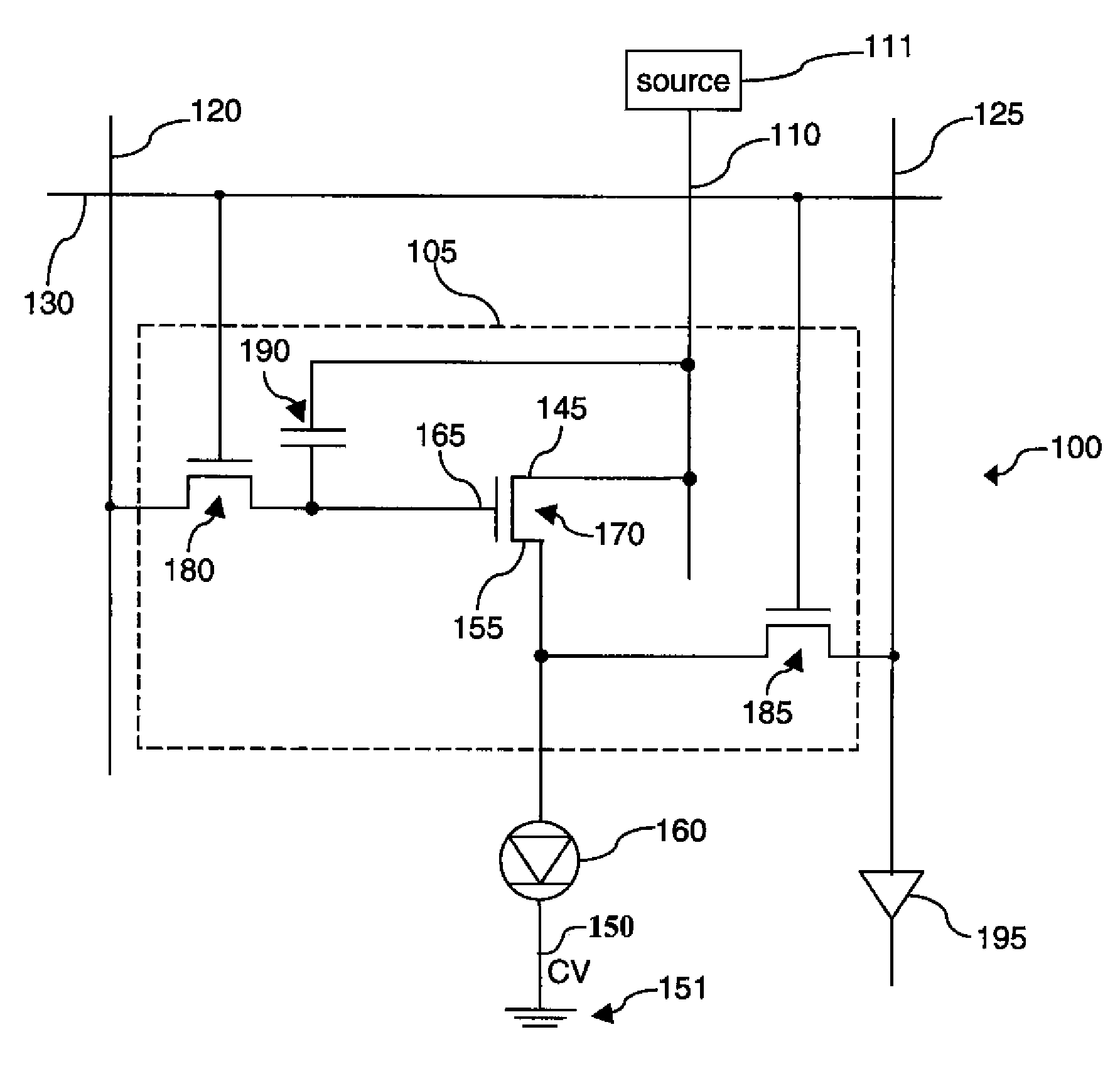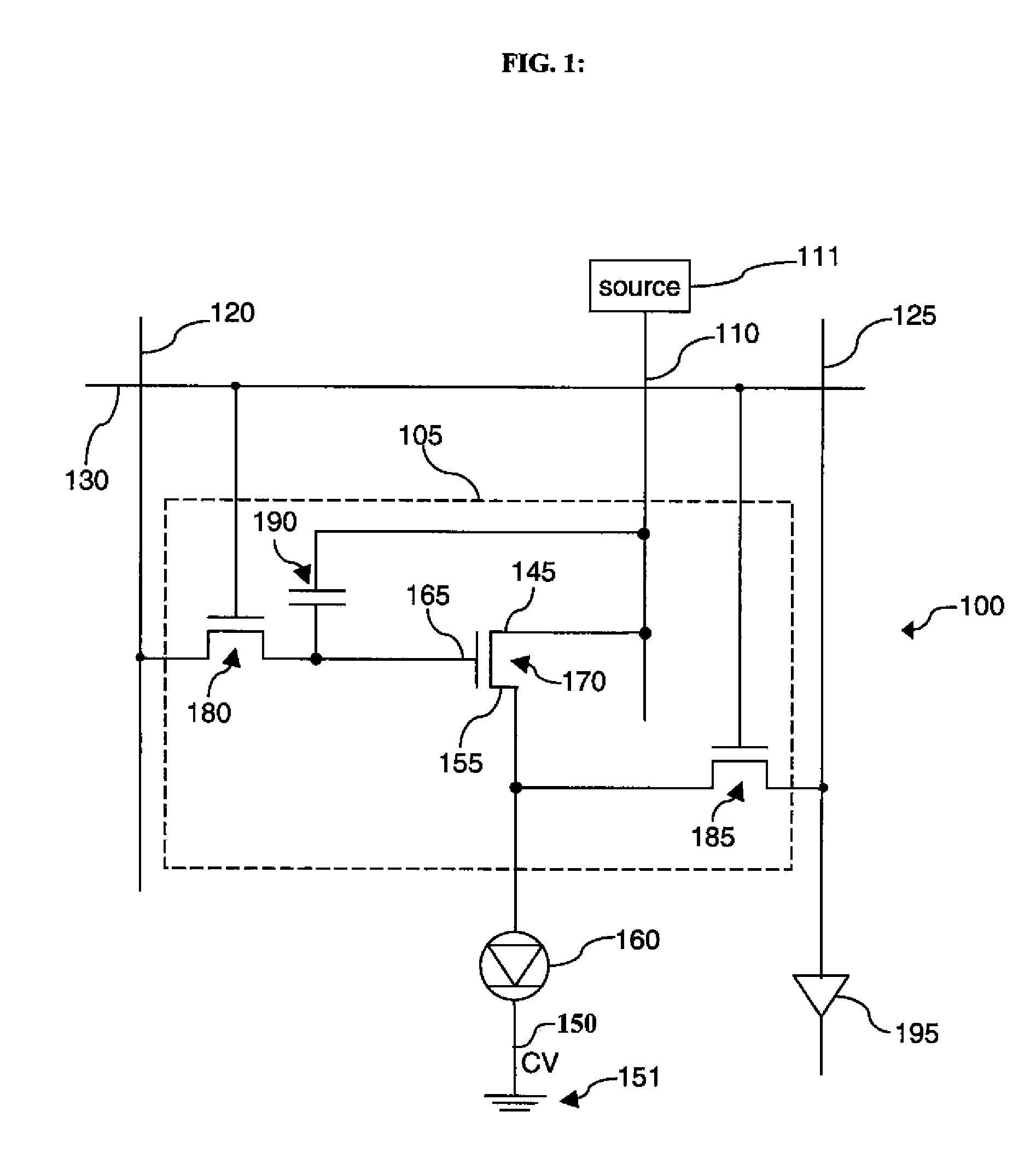Compensation scheme for multi-color electroluminescent display
a multi-color electroluminescent display and compensation scheme technology, applied in the direction of electrical testing, measurement devices, instruments, etc., can solve the problems of reducing the lifetime of the display, reducing the dynamic range and image artifacts, and reducing the efficiency of the display, so as to achieve the effect of simple voltage measurement circuitry
- Summary
- Abstract
- Description
- Claims
- Application Information
AI Technical Summary
Benefits of technology
Problems solved by technology
Method used
Image
Examples
Embodiment Construction
[0031]Turning now to FIG. 1, there is shown a schematic diagram of an electroluminescent (EL) pixel as described by Levey et al. in above-cited commonly assigned U.S. patent application Ser. No. 11 / 766,823. Such pixels are well known in the art in active matrix EL displays. One useful example of an EL display is an organic light-emitting diode (OLED) display. EL pixel 100 includes a light-emitting EL device 160 and a drive circuit 105. EL pixel 100 is connected to a data line 120, a first power supply line 110 driven by a first voltage source 111, a select line 130, and a second power supply line 150 driven by a second voltage source 151. By “connected” or “electrically connected” it is meant that the elements are directly connected or connected via another component, e.g. a switch, a diode, another transistor, etc. Drive circuit 105 includes a drive transistor 170, a switch transistor 180, and a capacitor 190. Drive transistor 170 can be an amorphous-silicon (a-Si) thin-film transi...
PUM
 Login to View More
Login to View More Abstract
Description
Claims
Application Information
 Login to View More
Login to View More - R&D
- Intellectual Property
- Life Sciences
- Materials
- Tech Scout
- Unparalleled Data Quality
- Higher Quality Content
- 60% Fewer Hallucinations
Browse by: Latest US Patents, China's latest patents, Technical Efficacy Thesaurus, Application Domain, Technology Topic, Popular Technical Reports.
© 2025 PatSnap. All rights reserved.Legal|Privacy policy|Modern Slavery Act Transparency Statement|Sitemap|About US| Contact US: help@patsnap.com



